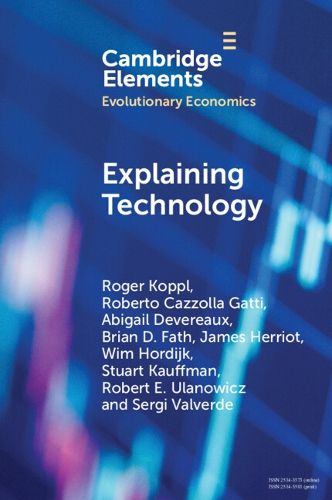Readings Newsletter
Become a Readings Member to make your shopping experience even easier.
Sign in or sign up for free!
You’re not far away from qualifying for FREE standard shipping within Australia
You’ve qualified for FREE standard shipping within Australia
The cart is loading…






A long tradition explains technological change as recombination. Within this tradition, this Element develops an innovative combinatorial model of technological change and tests it with 2,000 years of global GDP data and with data from US patents filed between 1835 and 2010. The model explains 1) the pace of technological change for a least the past two millennia, 2) patent citations and 3) the increasing complexity of tools over time. It shows that combining and modifying pre-existing goods to produce new goods generates the observed historical pattern of technological change. A long period of stasis was followed by sudden super-exponential growth in the number of goods. In this model, the sudden explosion of about 250 years ago is a combinatorial explosion that was a long time in coming, but inevitable once the process began at least two thousand years ago. This Element models the Industrial Revolution as a combinatorial explosion.
$9.00 standard shipping within Australia
FREE standard shipping within Australia for orders over $100.00
Express & International shipping calculated at checkout
A long tradition explains technological change as recombination. Within this tradition, this Element develops an innovative combinatorial model of technological change and tests it with 2,000 years of global GDP data and with data from US patents filed between 1835 and 2010. The model explains 1) the pace of technological change for a least the past two millennia, 2) patent citations and 3) the increasing complexity of tools over time. It shows that combining and modifying pre-existing goods to produce new goods generates the observed historical pattern of technological change. A long period of stasis was followed by sudden super-exponential growth in the number of goods. In this model, the sudden explosion of about 250 years ago is a combinatorial explosion that was a long time in coming, but inevitable once the process began at least two thousand years ago. This Element models the Industrial Revolution as a combinatorial explosion.